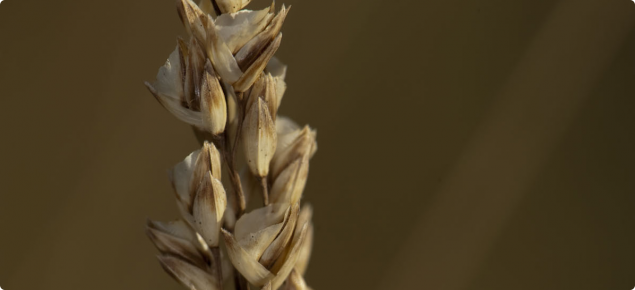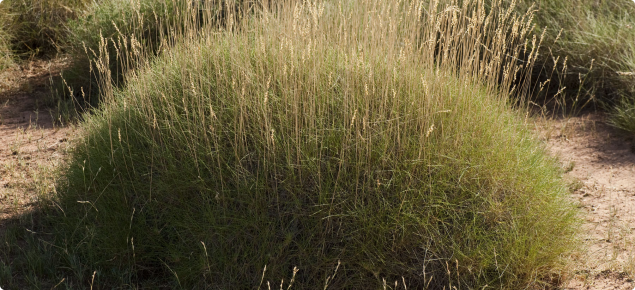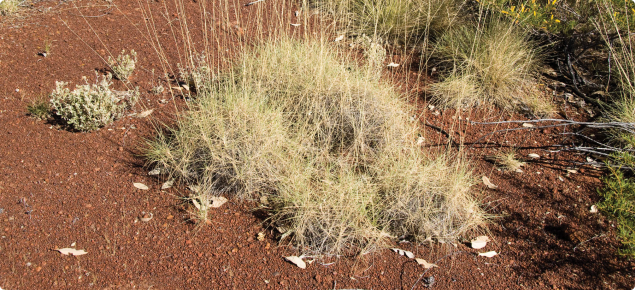Indicator value
Hard spinifex is a desirable species in hard spinifex pastures and undesirable elsewhere. It is an increaser species in other pastures. Hard spinifexes are considered desirable in hard spinifex pastures because they help to hold the soil together. More palatable grasses and herbs may be scattered among the spinifex clumps or concentrated in drainage lines when these pastures are well managed and seasonal conditions are favourable.
Limestone spinifex, T. wiseana, has a similar appearance and indicator value, but is often associated with limestone and is widespread on rocky ridges and gravelly slopes in the East Kimberley.
Forage value
Hard spinifex is unpalatable to livestock.
Habitat
Red and rocky soils.
General description
Hard spinifex is a perennial hummock grass that can grow to 1m tall and 2m across. Stems are smooth and without resin. The leaf blades are tightly rolled, stiff with a sharp point, and are green to blue-green. The seed head is a single spike with the seeds on short stalks. It flowers from February to May.



